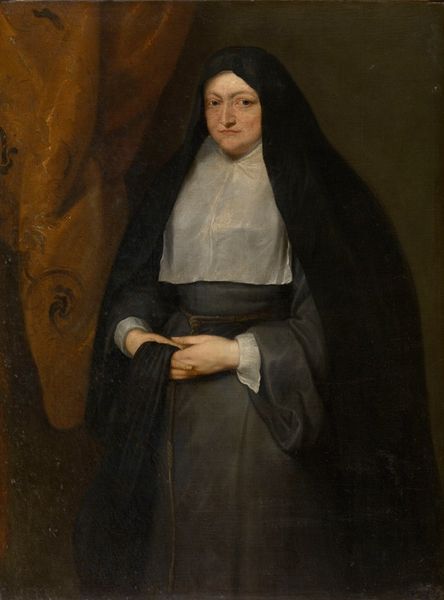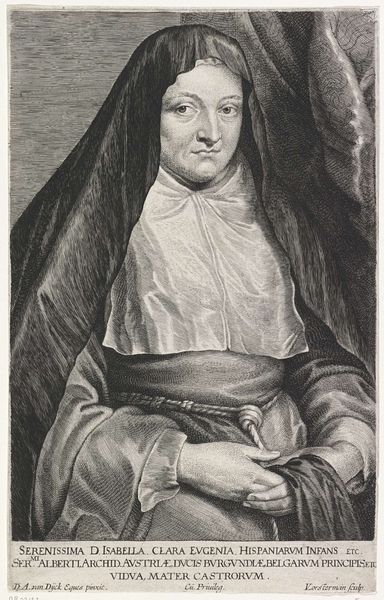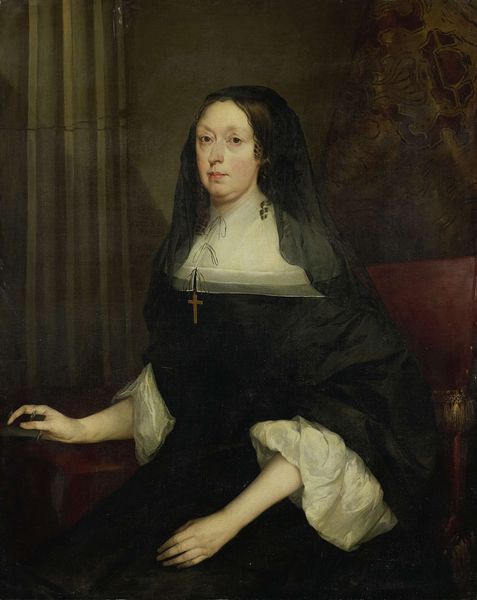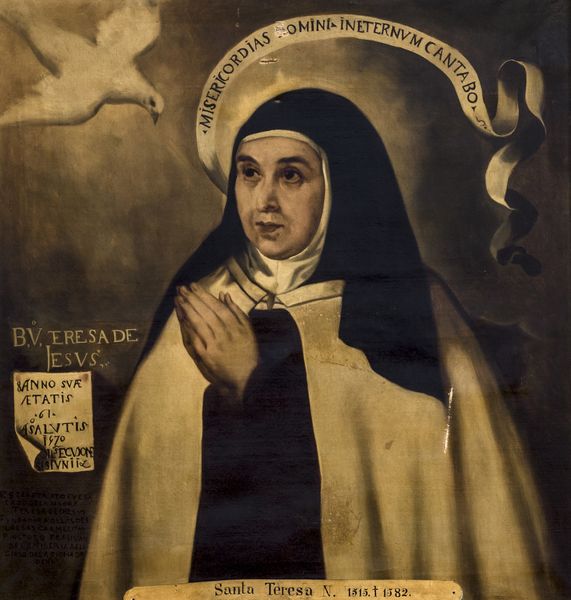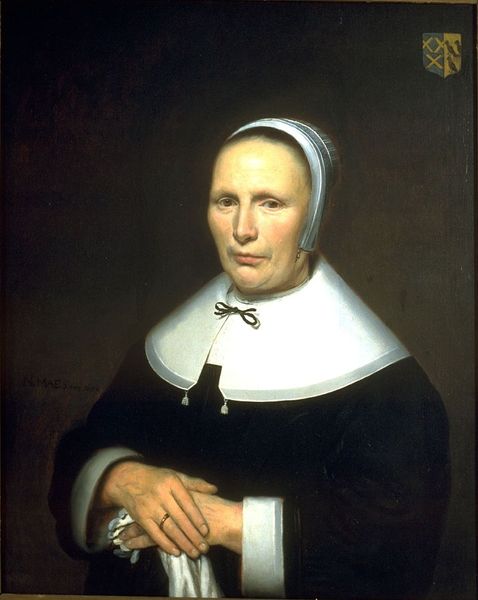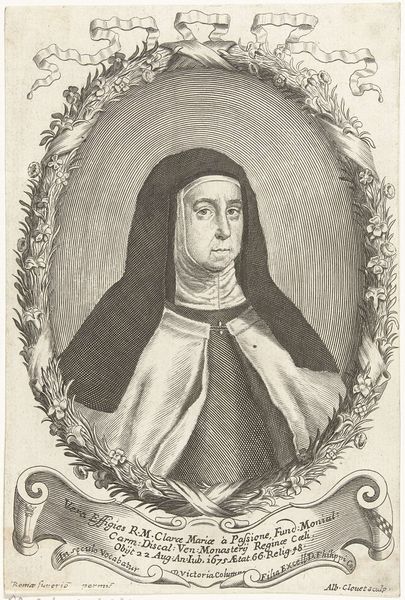
oil-paint
#
portrait
#
baroque
#
oil-paint
#
mannerism
#
vanitas
#
history-painting
Copyright: Public Domain: Artvee
Curator: Jusepe de Ribera's "Saint Teresa of Avila," created in 1644, employs oil paint to depict a moment of divine inspiration. What's your initial read of this piece? Editor: There's an immediate stark contrast. The soft illumination on Saint Teresa’s face and hands opposes the somber darkness. The overall composition, the saint's upward gaze paired with the stark whiteness of the dove, certainly hints at a moment of spiritual awakening, an epiphany in paint. Curator: Ribera, a master of the Baroque, definitely brings theatricality. But it’s important to think about how images of female saints like Teresa were circulated and consumed within the social context of 17th-century Spain. It's not just about devotion, it's about projecting power, influencing belief, and, materially speaking, commissioning artists like Ribera to shape religious identity. Editor: Yes, context enriches the interpretation. However, let's also note Ribera’s skillful interplay of light and shadow; how he models form through chiaroscuro and carefully applies strokes to direct the eye. The dove, for example, appears almost weightless through the way the artist renders its texture, creating contrast between ethereal spirit and earthly substance. Curator: The dove signifies the Holy Spirit, quite traditional. The interesting choice to add the skull right in front is a bit unexpected. This invokes vanitas symbolism—a stark reminder of mortality against her supposed sainthood. The use of vanitas images speaks to this period of heavy material production of artworks with increasingly darker and self reflective meanings. Editor: Good point. But from a purely formal viewpoint, observe how that skull anchors the lower left of the composition, creating a counterpoint to the soaring dove above. There is balance being created between the divine and mortal spheres through formal relationships that we, as viewers, can directly observe and interact with. Curator: Thinking about the practical creation of the painting--Ribera ran a large workshop in Naples. Did he paint this entirely himself, or did assistants contribute? The question is crucial. Labor and materiality have significant bearing here, not solely transcendent aesthetics! Editor: All those considerations contribute to a rich reading of this artwork. By addressing form and context we've gained new appreciation for "Saint Teresa of Avila" Curator: Indeed. Understanding the making illuminates the meaning of Ribera’s piece.
Comments
No comments
Be the first to comment and join the conversation on the ultimate creative platform.


